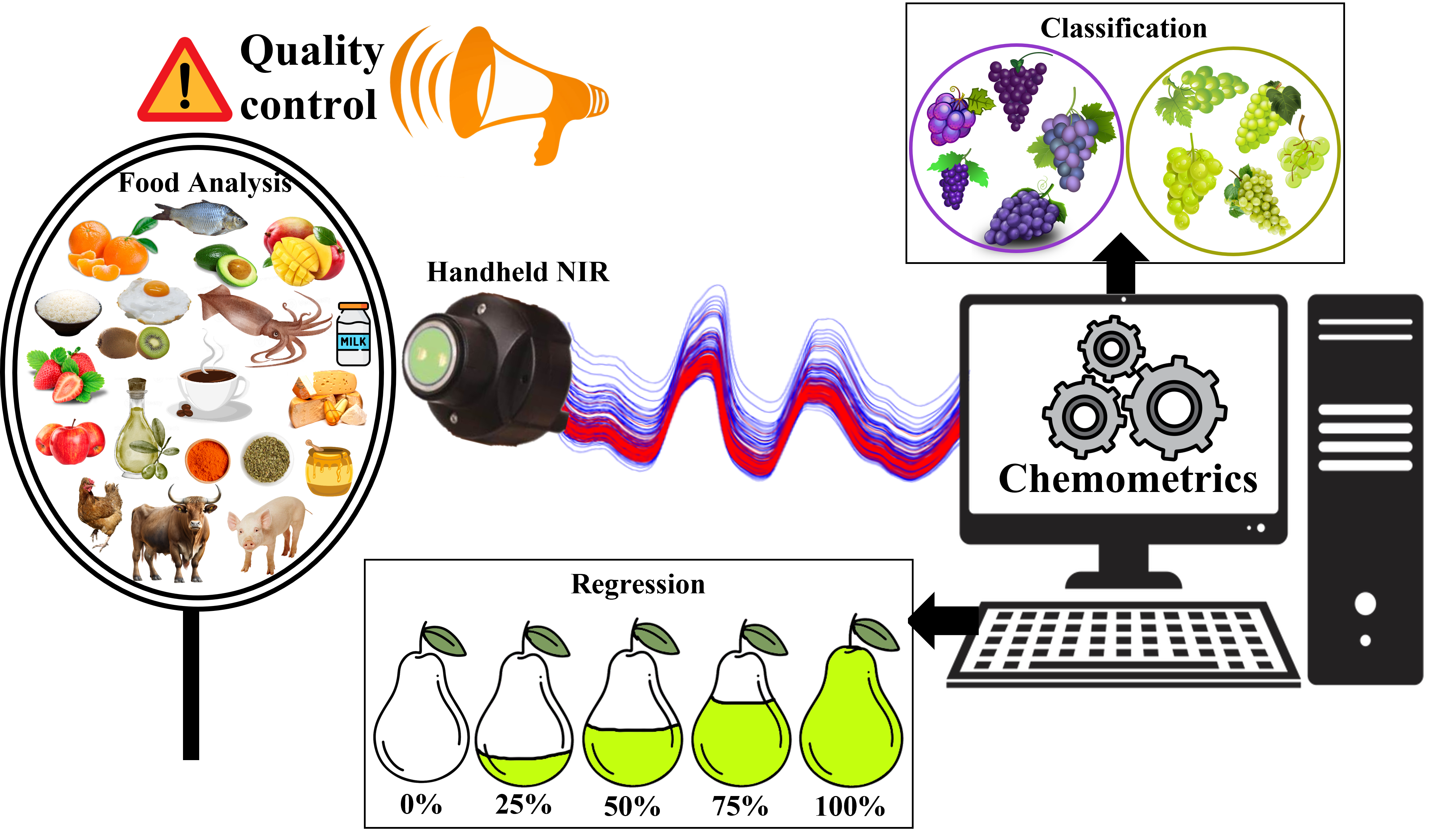ANÁLISE DE ADULTERAÇÃO DE ALIMENTOS POR ESPECTROSCOPIA NA REGIÃO DO INFRAVERMELHO PRÓXIMO COM INSTRUMENTO PORTÁTIL: UMA REVISÃO
DOI:
https://doi.org/10.36524/ric.v9i3.2210Keywords:
quality control, conformity;, chemometrics, Handheld NIR, foods, conformityAbstract
Certain food items possess significant nutritional and economic value. Consequently, ensuring product quality through stringent quality control measures is imperative within the food industry. However, the prevalence of food adulteration has become apparent, driven by the intention to profit from misleading product labeling. One methodology found in the literature that aims to identify food non-conformities is portable near-infrared (NIR) spectroscopy. Portable NIR analysis offers the advantages of on-site, real-time assessments, user-friendly operation, non-destructive sample handling, compact size, and cost-effectiveness compared to alternative techniques like chromatography commonly employed for non-conformity detection. The integration of multivariate analysis techniques with portable NIR is essential to mitigate interference effects, overcome spectral overlap challenges, and facilitate spectral interpretation. Thus, the objective of this study was to systematically investigate published works utilizing portable NIR and chemometrics for food conformity analyses through comprehensive literature searches conducted via reputable databases such as Web of Science, Scopus, and PubMed. The findings reveal that Brazil ranks as the second-leading country in terms of publications in this domain. Additionally, it is noteworthy that the existing body of research predominantly focuses on determining key quality variables in food (e.g., soluble solids content, fats, pH, among others) and detecting fraudulent practices such as adulteration with inferior-quality substances or deliberate manipulations to deceive forensic investigations. Moreover, ongoing efforts in the scientific community are dedicated to advancing the application of portable NIR for food adulteration detection across diverse food matrices, with a particular emphasis on developing novel methodological approaches.

Downloads
Published
Issue
Section
License
Copyright (c) 2023 Revista Ifes Ciência

This work is licensed under a Creative Commons Attribution-NonCommercial-NoDerivatives 4.0 International License.
Autores que publicam nesta revista concordam com os seguintes termos:
- Autores mantém os direitos autorais e concedem à revista o direito de primeira publicação, com o trabalho simultaneamente licenciado sob a Licença Creative Commons Attribution que permite o compartilhamento do trabalho com reconhecimento da autoria e publicação inicial nesta revista.
b. Autores têm permissão e são estimulados a publicar e distribuir seu trabalho online (ex.: em repositórios institucionais ou na sua página pessoal) a qualquer ponto antes ou durante o processo editorial, já que isso pode gerar alterações produtivas, bem como aumentar o impacto e a citação do trabalho publicado (Veja O Efeito do Acesso Livre).


